Trump's progress report: his impact so far and what to watch for next year
What may be America’s strangest presidency ever has been a radical departure – in tone if not in substance – not least over race, the media and the environment

This is arguably the strangest presidency in America’s 241-year history.
Donald Trump, billionaire businessman and reality TV celebrity, rises at the crack of dawn, compulsively watches cable news, impulsively rattles off thoughts on Twitter and lives in perpetual campaign mode, re-enacting old battles against Hillary Clinton and arming for new ones against the media, Robert Mueller and his next Democratic foe.
His approval rating hovers at a historically low 40% or thereabouts, indicative of a divided, split-screen nation. His base still turns out for his rallies with quasi-religious fervour, worshipping the president and – no less importantly – venting hatred at his enemies: it is the force of anti-anti-Trumpism. But millions of Americans contemplate the awesome spectacle with a bulging-eyed horror, sickened by his worst excesses and still scarcely able to believe that Trump is president of the United States: a stress test for constitutional democracy.
Here is a progress report on the 45th president so far – and what new twists and turns await in 2018.
Environment
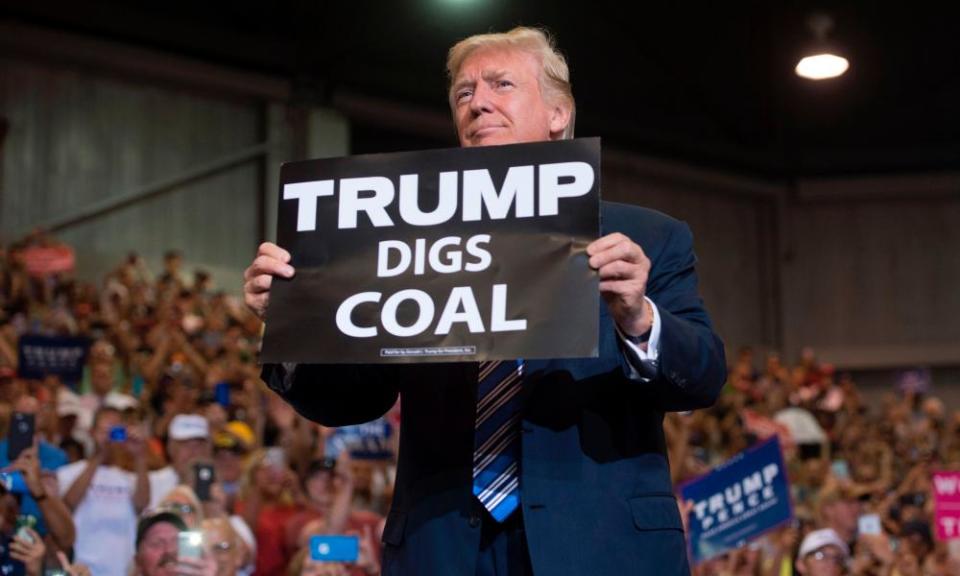
Trump has taken a buzzsaw to Barack Obama’s environmental legacy, most obviously by announcing that America would withdraw from the Paris climate agreement; with Nicaragua and Syria recently signing up, the US is now the only country to stand outside it. The president has also declared an end to the so-called “war on coal”, lifted the ban on mining companies dumping waste in rivers and streams, approved the Keystone XL pipeline, cancelled a rule that would have helped prevent endangered whales and sea turtles from becoming entangled in fishing nets and drastically shrunk two national monuments in Utah.
The zealous crusade – part of what his former chief adviser Steve Bannon called “the deconstruction of the administrative state” – is only likely to continue in 2018, with Obama’s signature policy on climate change, the Clean Power Plan, in the crosshairs. But so too is the resistance, with individual states, cities, businesses and campaign groups working to meet the goals of Paris with or without the White House.
Healthcare, tax reform and infrastructure
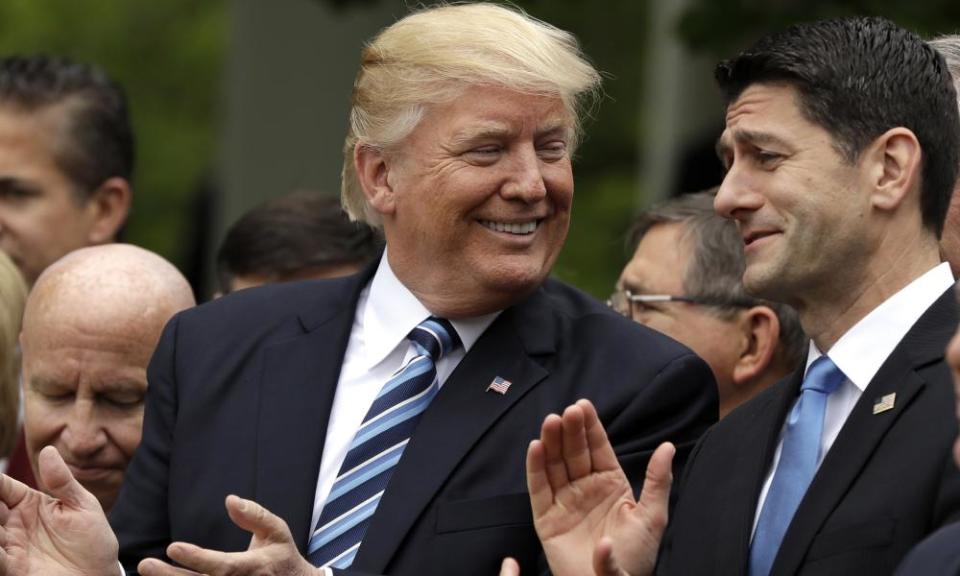
Senator John McCain’s late-night vote to scuttle the repeal and replacement of Obama’s Affordable Care Act was one of the biggest blows to the Trump presidency, undermining his claim to be a master deal-maker. But the more successful passage of tax reform – criticised as a handout to the rich at the expense of the middle class – will lead to the repeal of the individual mandate, the requirement to buy health insurance or pay a penalty. This could cause the health insurance market to implode in 2018 and, the Congressional Budget Office estimates, will strip health coverage from 13 million Americans a decade from now.
With projections showing the tax bill will increase the deficit by more than $1.4tn, Republicans including the House speaker, Paul Ryan, are planning to slash Medicare and Medicaid to pay for the deficit explosion. But the surge of protest and activism around healthcare reform is a sign that Republicans may feel pain in the midterm elections, while Senator Bernie Sanders and others will feel increasingly emboldened in demanding a single-payer system. The next looming priority is a $1tn infrastructure programme. It has been seen as an opportunity to build bridges with Democrats, but Trump may have already burned too many.
Immigration

Trump tried to hit the ground running. After just a week in office, he issued an executive order banning entry for 90 days by citizens from Iraq, Syria, Iran, Libya, Somalia, Sudan and Yemen; the order also indefinitely halted refugees from Syria. It triggered confusion and protests in airports and was quickly blocked by courts, leading to revised orders and a legal tug of war that is likely to continue into 2018 – although a version of the ban is currently in effect.
Meanwhile, in September, Trump announced the end of the Obama-era Deferred Action for Childhood Arrivals program (Daca), which protects about 690,000 “Dreamers” who were brought to the US as children, or came with families who overstayed visas. The president then quickly appeared to backtrack and pass the buck to Congress. “If they can’t, I will revisit this issue!” Unless the White House or Capitol Hill take action, nearly 300,000 people could begin to lose their status next year, and more than 320,000 would lose their status from January to August 2019.
Perhaps the biggest cheers at Trump’s rallies are still reserved for his proposed wall on the US-Mexico border. Eight prototypes have been erected in the California desert and construction could begin next year – if the money can be found. Mexico has yet to agree to pay for it.
Media
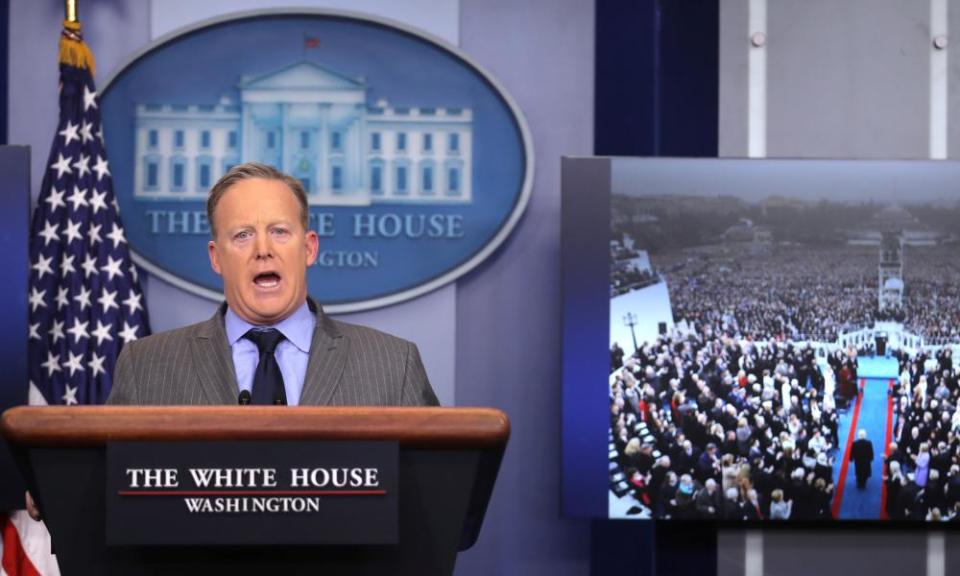
The Trump administration began with the sound and fury of Sean Spicer, the White House press secretary, ranting at the media over its failure to acclaim Trump’s inauguration as bigger than Obama’s. This set the tone for a tumultuous relationship which has seen Trump, a former reality TV host, and his allies brand the media as “damned dishonest”, “the opposition party” and “enemies of the people”.
Major Garrett, White House correspondent of CBS News, told the Daily Beast there had been a cultural shift in the administration’s approach: “Disdainful of the whole set of ground rules, the whole architecture of the briefing, of the interaction with the White House press corps. The disdain is new. And it comes from Trump, pure and simple.” The president has sought to bypass the media by using Twitter, often stirring controversy, outrage and the slapping of hands on heads.
But while supporters hail the Washington Post, New York Times and other outlets for playing a crucial role in keeping Trump’s authoritarian instincts in check, this can also be seen as a new golden age of satire, with Stephen Colbert, Trevor Noah, John Oliver, Saturday Night Live and other comedians shining a light on political absurdities in a nightly celebration of the first amendment.
Race
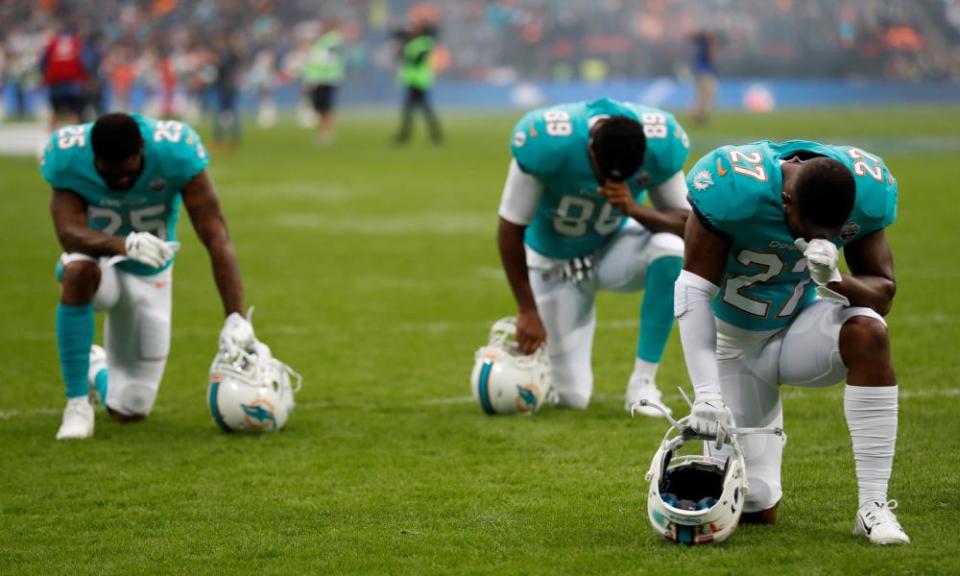
The successor to Obama, America’s first black commander-in-chief, has proved one of the most divisive presidents of all time and, more often than not, race has been at the heart of it. There was the white supremacist march in Charlottesville, Virginia, in which a civil rights protester was killed, prompting his comment that there were “very fine people on both sides”; the slow response to the hurricane in Puerto Rico; the condemnation of American football players who “take the knee” during the national anthem to make a statement against racial injustice; the dispute with the widow of an African American soldier killed in Niger; and his derogatory reference to Native Americans in front of Navajo guests.
A majority of Americans (60%) say Trump’s election has led to worse race relations in the US, while just 8% say it has led to better race relations, according to a new national survey by Pew Research Center. Ta-Nehisi Coates, the African American journalist and author, published an essay entitled “The First White President” and refers to Trump as a white supremacist.
The recent departure of aide Omarosa Manigault Newman leaves Trump without any African Americans on his senior staff, and his nominees to federal courts – including supreme court appointment Neil Gorsuch – are turning back the clock on diversity (91% are white, 81% are male), with grave implications for future rulings affecting discrimination and civil rights. The massive turnout of African American voters in the recent Senate special election in Alabama suggests that Republicans could pay the price at the ballot box in 2018.
Russia
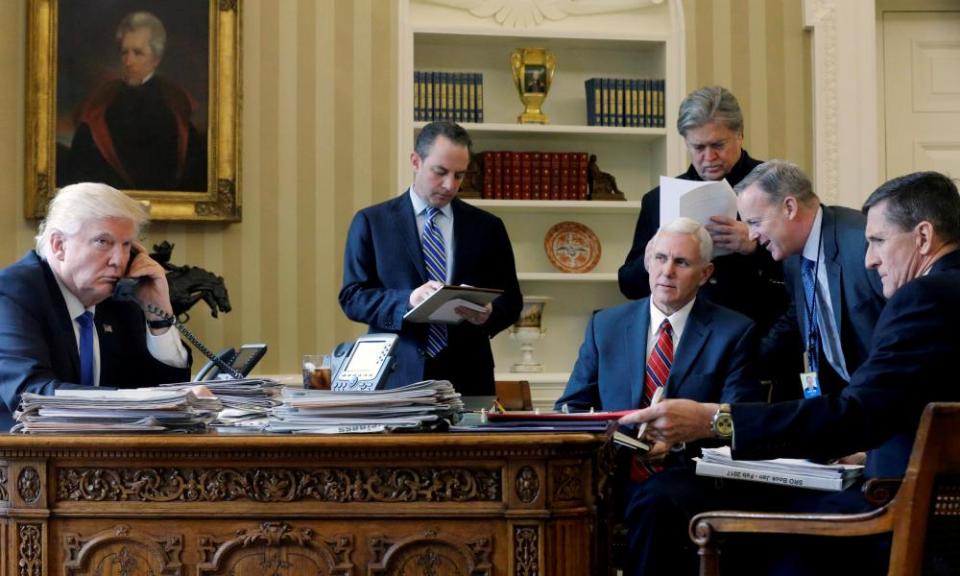
The first year of the Trump presidency has taken place under the ever-darkening cloud of alleged collusion between his election campaign and Russia. Special counsel Robert Mueller was appointed in May, following Trump’s dismissal of the FBI director James Comey, which may yet prove a case of obstruction of justice. Since then there has been a steady drip of damaging revelations, notably Donald Trump Jr’s June 2016 meeting with a Russian lawyer promising “dirt” on Hillary Clinton, and the indictments or guilty pleas of four members of Trump’s inner circle including the former national security adviser Michael Flynn.
Such is Mueller’s pace that it seems 2018 will bring the matter to a climax. Unlike Richard Nixon during Watergate, Trump has Fox News, Breitbart News and other conservative outlets fighting in his corner, seemingly going all out to discredit and delegitimise the special counsel’s conclusions even before they are published. It could be paving the way of Mueller’s dismissal early in the new year, though Trump has denied this.
The public reception to Mueller’s findings may therefore be one of the most bitterly polarised moments yet. Should he accuse Trump of collusion, there will be calls for impeachment, but Republicans on Capitol Hill will not necessarily heed them. Meanwhile the world is still waiting for Trump to utter anything remotely critical about the Russian president, Vladimir Putin.

